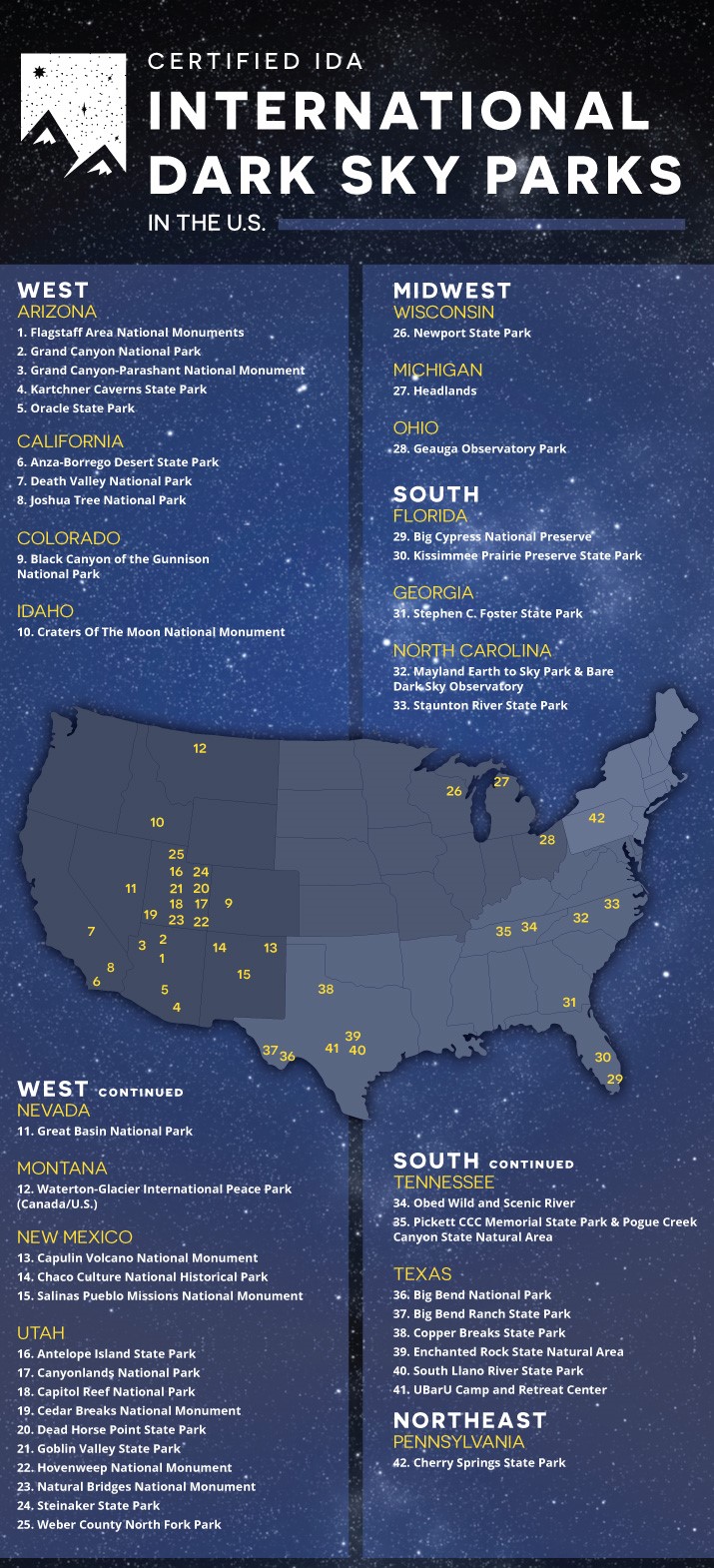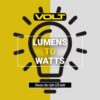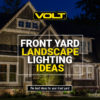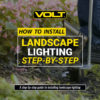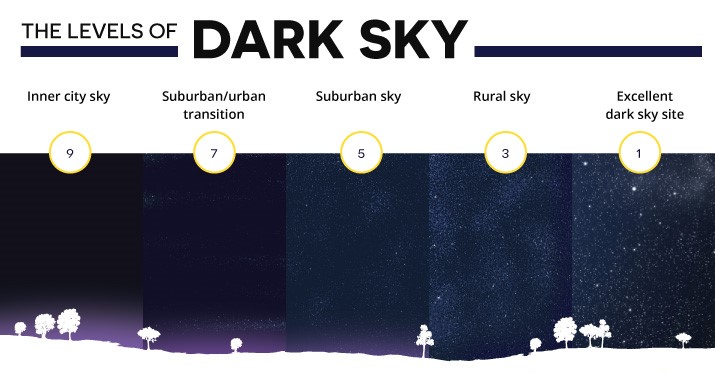 Losing the Dark of Night, at the Speed of Light
Losing the Dark of Night, at the Speed of Light
Researchers claim that 99% of people in Europe and the United States live under light-polluted skies. In some parts of the world, people never experience a true night sky, but merely an artificial twilight.
The problem stems from poorly targeted, overly bright, and improperly shielded outdoor lighting. Rather than being focused on the actual area that needs to be illuminated, bad lighting spills where it’s not intended or needed—particularly the night sky.
The High Cost of Light Pollution
Uncontrolled outdoor lighting robs us of the experience of seeing a night sky brimming with stars, but that’s not the only cost of light pollution—or even the highest. Poor lighting wastes billions of dollars per year in energy consumption and carbon emissions. There’s also a growing body of scientific evidence around the public health risk of overexposure to artificial light at night.
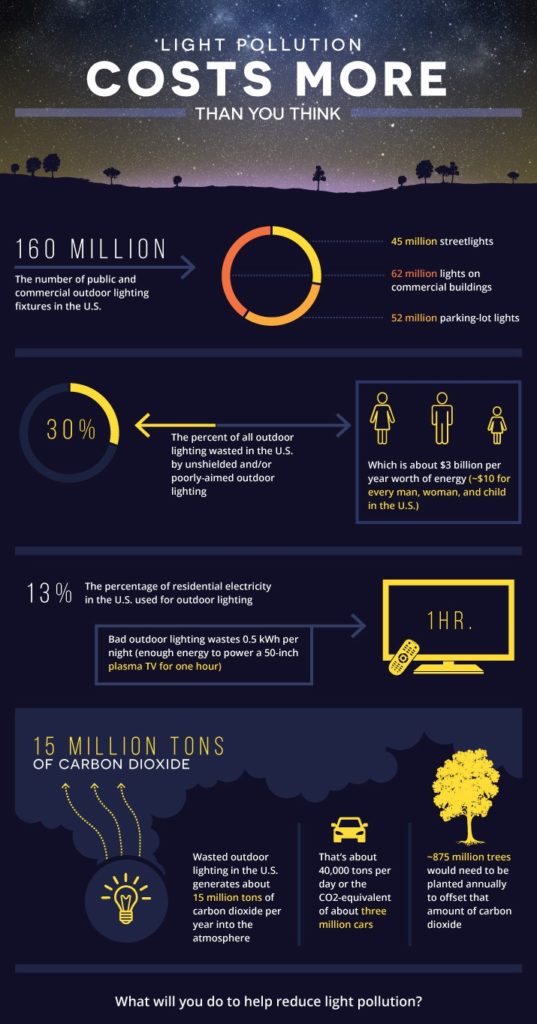 Energy Waste
Energy Waste
The financial toll of unnecessary and uncontrolled lighting is one of the most surprising consequences of light pollution. Money is wasted producing “lost light,” any light that doesn’t shine directly on the ground or an object meant to be illuminated, like a home or landscape feature.
The International Dark-Sky Association (IDA) estimates that at least 30 percent of all outdoor lighting in the U.S. is wasted, mostly by lights that aren’t properly shielded. That adds up to about $3 billion in wasted energy every year—or approximately half of the estimated cost of sending four people to Mars.
Wasted outdoor lighting in the U.S. also generates about 15 million tons of carbon dioxide per year into the atmosphere. That’s about 40,000 tons per day or the CO2-equivalent of about three million cars.
Public Health Risk
A growing body of research suggests that light pollution may have a significant and adverse impact on human health. In 2016, the American Medical Association adopted guidance for communities on selecting among LED lighting options to minimize harmful human and environmental effects.
The core concern is the effect of artificial lighting on our sleep habits. Like most life on Earth, humans adhere to a sleep-wake pattern governed by the 24-hour day/night cycle. This pattern, known as our circadian rhythm or biological clock, is vital for our health. Leading up to sleep, the pineal gland is activated by darkness and begins to secrete the hormone melatonin, signaling to our body that it’s time to prepare for a state of deep rest. Artificial light, especially short-wavelength (“blue”) light, disrupts our circadian rhythms by tricking the brain into thinking it’s daytime.
Circadian rhythm disruption can make it hard to get a good night’s sleep. Abnormal light exposure may also cause various metabolic and chronic conditions to arise. Researchers at the University of California, Irvine noted that about 10 to 15 percent of all human genes are regulated by circadian rhythms, so the disruption of these cycles can “profoundly influence human health.”
Dark-Sky Lighting Principles
Appearing in Scientific American, the McDonald Observatory’s Dark Skies Initiative (DSI) explains how easy it really is to flip the switch on light pollution: “We can reclaim vast amounts of energy currently wasted inadvertently into the night sky…by using light fixtures that are shielded to reflect light down where it is needed, as well as using the smallest number of lights and lowest wattage bulbs necessary to effectively light an area.”
There are just four main dark sky lighting principles you need to know if you want to reduce your amount of light pollution:
- Minimize the amount of illumination
- Minimize the area of illumination
- Minimize the duration of illumination
- Use long-wavelength lights
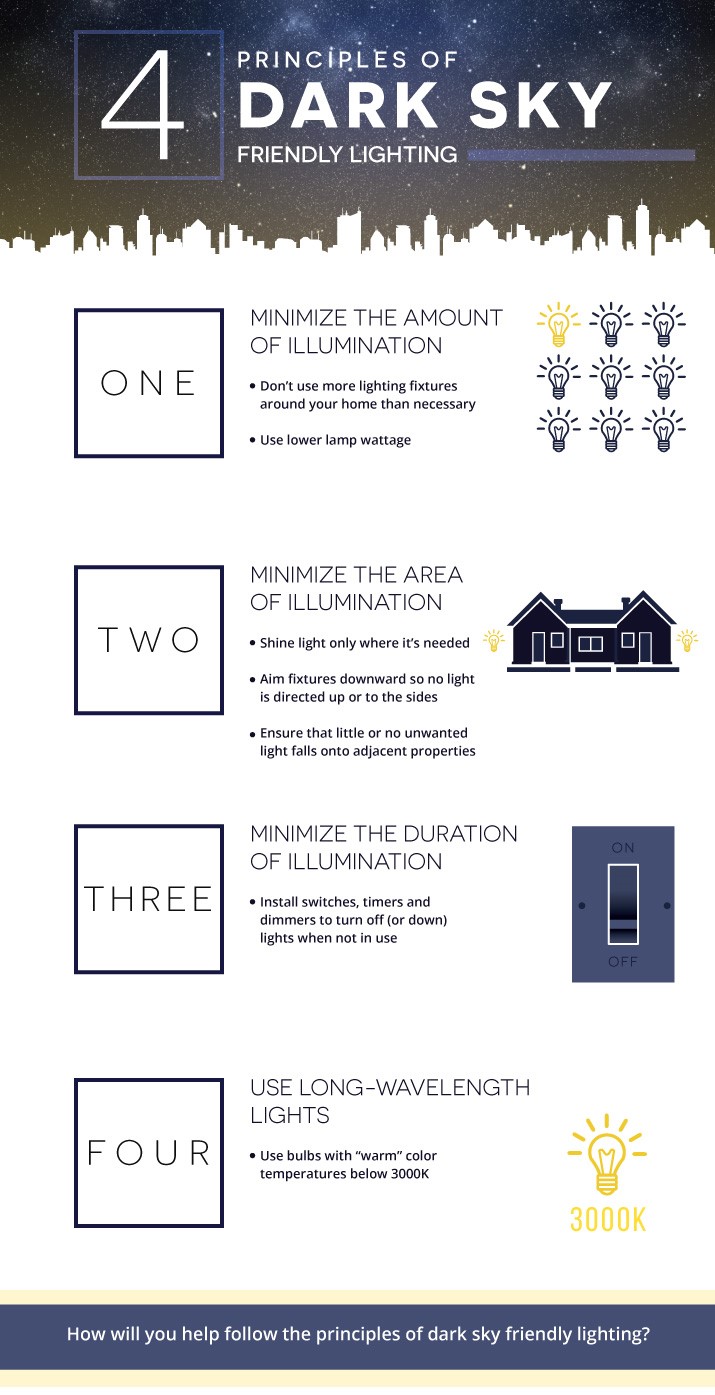
Dark-sky Friendly Outdoor Lighting Fixtures
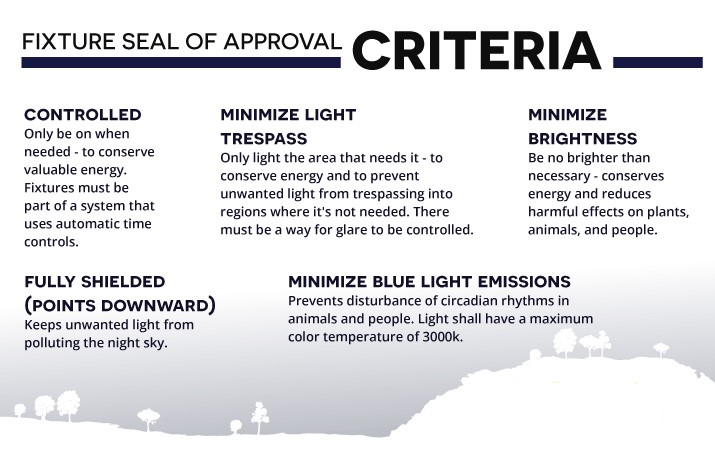
The International Dark-Sky Association doesn’t sell dark sky light fixtures, but it does certify fixtures to help consumers select outdoor lighting products that can help minimize their light “footprint.” IDA’s Fixture Seal of Approval program provides objective, third-party certification for lighting that minimizes glare, reduces light trespass, and doesn’t contribute to light pollution of the night sky.
Become a Dark-Sky Advocate
Leading by example through the installation of dark-sky friendly outdoor light fixtures is a great place for homeowners to start. According to DSI, again from the Scientific American article on light pollution, “Once people see it in action, and understand its implications for cost savings and enhanced visibility, they are far more likely to adopt good lighting practices on their own.” But how do you bring up the topic of light pollution with your neighbor if your example isn’t enough? The IDA suggests the following steps to educate your neighbors (and by extension your community) about the value of dark-sky lighting:
- Suggest alternatives to their current fixture, or recommend ways for making it less impactful (shield it, or add a motion sensor so it’s activated only when needed)
- Explain the issues regarding light pollution, including the cost of wasted light and the impact of light pollution on public health and the environment
- Explain how your neighbor can benefit from dark-sky lighting principles (specifically how much money he or she can save) and how proper lighting creates an atmosphere that benefits the entire community
- Provide examples of local businesses or homes in the neighborhood with dark-sky lighting as an example of how “responsible” outdoor lighting doesn’t mean less safety or curb appeal
Certified IDA International Dark Sky Parks in the U.S.
Do you want to experience an undisturbed night sky and imagine what it might be like if more of the world adopted dark sky lighting principles? Visit an IDA International Dark Sky Park! These parks are lands possessing an “exceptional or distinguished quality of starry nights,” and with more than 40 IDSPs in the United States, you might be a lot closer to one than you think.
